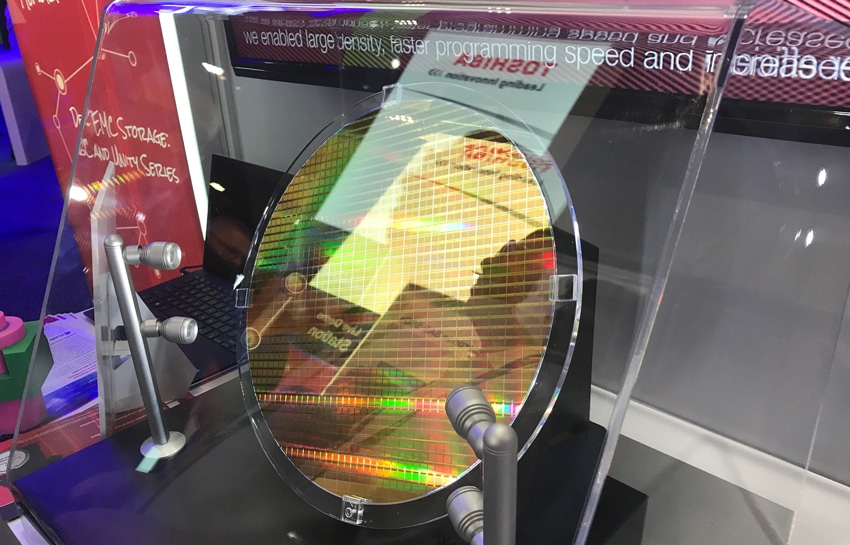Toshiba Storage will demonstrate its new 64-layer BiCS FLASH 3D technology via an XG Series client NVMe PCIe SSD at Dell EMC World 2017. Toshiba’s latest BiCS FLASH combines performance, cost, and endurance for all types of SSDs. Back in August of 2015, Toshiba began developing the first (i.e., 48-layer) iteration of BiCS 3D technology.

BiCS FLASH is a 3D flash memory stacked cell structure designed for high capacity and performance use cases including enterprise and consumer SSDs. Enhancing the reliability of write/erase endurance as well as boosting write speeds, the new BiCS FLASH technology leverages the third generation 64-layer stacking process, boasting 65% more in bit density per mm compared to Toshiba’s 48-layer, 256GB (32 gigabyte) device. Toshiba indicates that they chose the new XG Series SSD to launch the 64-layer flash memory because the drive’s broad adoption, maturity and robustness has been “honed” over a series of PCIe/NVMe client SSD product releases.
In addition, Toshiba will be migrating all client, data center, and enterprise SSDs to the new BiCS FLASH 64-layer 3D memory. It’s not known when end-user consumers will be able to take advantage of this new technology, but that will likely happen sometime within the next year.




 Amazon
Amazon